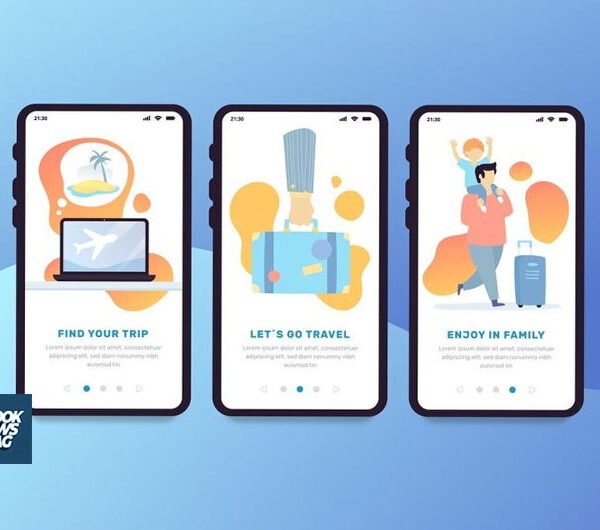Exploring the Impact of Educational Apps on Learning and Engagement
Technology has revolutionized education. From online courses to adaptive learning platforms, digital tools provide boundless opportunities for customized and engaging learning experiences. Educational apps, in particular, play a vital role in this modern educational landscape. With their ability to make learning accessible, interactive, and personalized, educational apps empower students and educators alike. This article explores the wide-ranging impact of educational apps on learning and engagement. By analyzing case studies, emerging trends, and lingering challenges, it paints a comprehensive picture of how these vital platforms continue to shape education.
Educational Apps Make Learning More Accessible, Effective, and Enjoyable
Education technology removes barriers to quality learning resources. Students can access educational apps anytime, anywhere, often at little to no cost. These apps expose them to real-world issues, interactive simulations, and creativity-fostering experiences independent of their socioeconomic backgrounds. They make learning more inclusive.
Additionally, educational apps allow for personalized educational journeys catered to individual learning abilities and paces. Features like adaptive questioning and customized study recommendations help students fill knowledge gaps and practice effectively. Educators also gain better insight into student progress through apps’ real-time analytics. Such personalized feedback loops are proven to boost educational outcomes.
Finally, educational apps make learning fun. Game-based learning platforms motivate students through competitive elements, real-world simulations, and creative projects. This enjoyment encourages more frequent engagement with course material, driving better recall and mastery. Apps thus make education more rewarding and inspiring.
Educational Apps Promote Engagement via Interactivity, Collaboration, and Personalization
From elementary math games to interactive college chemistry labs, educational apps bring learning to life through digital experiences. Their hands-on simulations grab attention, while their competitive and multiplayer options facilitate peer learning. Core engagement drivers include:
Gamification Elements
Educational apps borrow video game design strategies to immerse students in learning. Points, leaderboards, streak systems, and creative themes motivate continued engagement resembling gameplay. Badges and certificates also allow students to showcase mastery. Such gamification strategies produce rewarding experiences that feel more like play than work.
Social Features
Educational apps’ messaging and discussion features enable collaborative learning, allowing students to debate ideas and learn from each other. Multiplayer games also facilitate teamwork, bringing out friendly competition. Such social elements mirror real-world team dynamics, helping students develop communication abilities alongside core skills.
Adaptive Learning
Leveraging data analytics, educational apps can tailor experiences to individuals’ abilities, pacing, and interests. Adaptive questioning adjusts difficulty based on performance, while personalized content recommendations help students play to their strengths and address weaknesses. Such customization sustains motivation by ensuring exercises remain appropriately challenging.
Intuitive Design
Educational apps need user-centered designs forsmooth navigation and interactions. Elements like minimalist dashboards, context-based menus, and step-by-step walkthroughs allow students to remain focused on learning rather than struggling with technical quirks. Such considered design dramatically impacts an app’s instructional utility.
Thoughtful blends of these engagement drivers allow educational apps to feel more like games than lectures, keeping students delightedly immersed for impactful learning.
Case Studies Demonstrate Educational Apps’ Transformative Potential
While engagement features constitute apps’ core utility, real-world implementation determines their success. The following case studies of award-winning educational apps demonstrate best practices for technology-enabled learning:
Math by Kahoot
- Over 70 million monthly active students
- Game-show format math quizzes for K-12 students
- Leaderboards, points incentives, memes, and music for engagement
- Used by 97% of US K-12 schools
- Credited for higher math grades and confidence among students
Anatomy 4D
- 3D anatomy models with AR overlay capability
- 1800+ accurate anatomy models across human and animal categories
- Virtual dissections, skeletal mappings, and physiology simulations
- Adopted by over 700 medical schools globally
- Demonstrated knowledge retention improvement in anatomy students
Age of Learning Apps
- Used by over 100 million students worldwide
- Adaptive Curriculum spanning reading, math, science, and art for pre-K to 8th grade
- Personalized learning plans adjusted to ability levels
- Links performance data to state curriculum guidelines for simplified tracking
- Correlated with literacy and numeracy gains across socioeconomic groups
The apps above blend multimedia engagement, social sharing, competitive motivation, adaptive learning, and specialized content for measurable learning improvements. Their design choices provide excellent best practices frameworks for developers crafting education apps across disciplines.
Emerging Trends Reshape Educational App Landscapes
Education apps continue gaining traction globally, projected to become a $14 billion dollar industry by 2025. Several emerging trends power this growth:
Rise of Augmented and Virtual Reality
Immersive simulations enhance traditional learning content with augmented or virtual overlays. Apps like zSpace provide collaborative AR/VR experiences for exploring topics like anatomy, physics, and astronomy. Such technologies could soon expand beyond STEM topics into disciplines like history, literature, and art.
Artificial Intelligence Integration
AI algorithms help education apps interpret complex performance data for personalized learner profiles. Machine learning models enhance recommendation engines and adaptive questioning systems for a more customized experience. As AI research progresses, expect deeper personalization and even conversational education agents.
Expansion Across Disciplines
While early EdTech apps focused heavily on core K-12 topics like math, reading, and science, today’s platforms expand into specialized disciplines like medicine, music, graphic design, and architecture. Continued expansion seems imminent as technology unlocks new multimedia capabilities.
Rise of Mobile Learning
Education apps originated on desktops, restricting usage locations. However, phones now serve as primary devices for many individuals globally. To address this shift, developers emphasize cross-platform designs, mobile optimization, offline functionality, and flexible learning times. Such accommodations help make education accessible 24/7.
Technology will only continue enhancing education apps. But human-centric design considerations determine whether innovations meaningfully impact learning. The most successful future apps will blend cutting-edge capabilities with engaging user experiences for truly empowering education.
Overcoming Lingering Barriers: Accessibility, Privacy, and Balance
For all their promise, education apps still face adoption barriers. Many tools fail to consider issues like accessibility, data privacy, and screen time balance, limiting their universality.
Accessibility Across Devices and Abilities
Well-designed apps work seamlessly across platforms like iOS, Android, Windows, and the web. Conversely, platform-exclusive tools severely limit access. Support for assistive devices like screen readers and alternative input methods also remains sparse but essential for inclusive environments.
Student Data Privacy and Security
Education apps gather immense amounts of student data, raising ethical questions around privacy policies. Transparent data gathering guidelines, rigorous cybersecurity infrastructure, and responsible use of analytics constitute best practices for fostering trust. Neglecting these factors risks controversy.
Achieving Healthy Screen Time Balance
Excessive screen exposure risks physical strains like fatigue and eye strain while impeding holistic development. But completely banning devices ignores technology’s conveniences. Solutions likely involve conscious app design that motivates periodic offline work and movement-integrated features like AR. Notifications may also remind users to take breaks. Such innovations could prevent dependence and burnout.
Overcoming Adoption Hurdles
Many schools face tight budgets and limited wifi capabilities while lacking IT support for managing education tech. Solutions include apps with both online and offline functionality, teacher technical training programs, and partnerships with school districts to ease logistical burdens. Addressing such systemic barriers will accelerate large-scale adoption.
Inclusivity, security, health, and infrastructure improvement constitute pressing imperatives for education apps. But these challenges seem surmountable through forethought, cooperation, and continuous innovation.
The Future Looks Bright for Education Apps
Educational apps empower personalized, engaging, and effective learning like never before. Learners worldwide will continue benefiting from these tools’ conveniences and capabilities long into the future.
Apps break geographical barriers restricting access to quality instruction. They enable customized journeys tailored to each student’s unique pace and strengths. And they immerse students in rewarding multimedia simulations that feel more like games than lectures. These invaluable traits make education apps universal catalysts for improved literacy, numeracy, and beyond.
And continued technological innovation seems poised to enhance apps’ offerings even further. Augmented reality, conversational agents, hyper-personalization, and smart device integration constitute just some of the imminent developments set to reshape education. Of course, for all their technological prowess apps must continue prioritizing inclusive and ethical design. User health, data privacy, and accessibility ultimately determine an app’s real-world utility, regardless of its fancy features.
By balancing cutting-edge innovation with responsible design, education apps can uplift countless learners worldwide. These empowering tools provide enriched springboards for academic and professional journeys while making the learning process itself more fulfilling and joyful. Parents, teachers, and policymakers should continue exploring and investing in education apps’ immense potential to inspire future generations.









